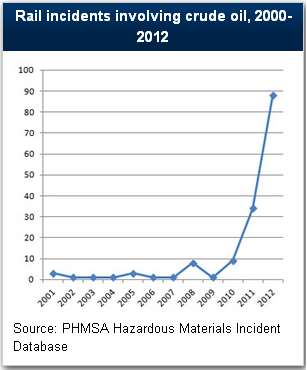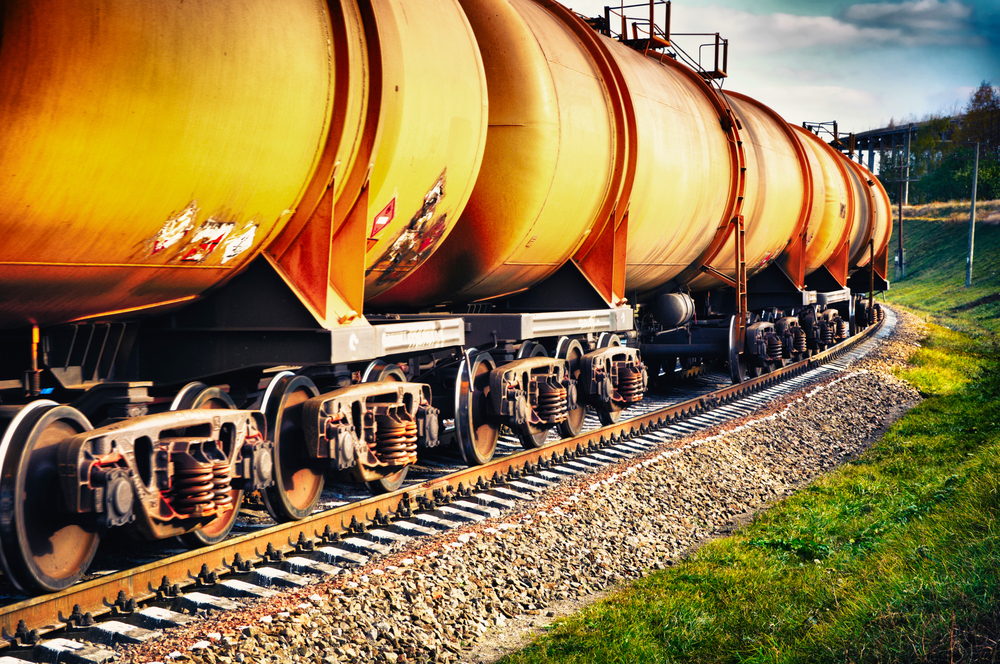As more oil is being shipped by train across North America, more oil is being spilled from trains. EnergyWire reports:
The number of spills and other accidents from railroad cars carrying crude oil has skyrocketed in recent years, up from one or two a year early in the previous decade to 88 last year.

Most of the spills are relatively small — nothing like the deadly disaster in Lac-Mégantic, Quebec, earlier this month — but with oil shipments on the rise, there’s cause to be concerned.
Oil production has increased thanks to fracking and other drilling technologies, but North America’s pipeline network hasn’t kept up, so railroads are stepping in to fill the void, especially in areas not served by pipelines. Rail transport is more expensive, but it doesn’t require new infrastructure or permits. U.S. railroads have already moved 40 percent more crude and refined product this year than in 2012.
With that growth has come a number of high-profile spills and accidents, many on Canadian Pacific Railway’s network, which runs through Alberta, the largest oil exporter to the United States, and the Bakken field [in North Dakota].
Canadian Pacific suffered the industry’s first serious spill in late March, when 14 tanker cars derailed near Parkers Prairie, Minnesota, and leaked 15,000 gallons of crude. Regulators have not released the results of their investigation into the incident, and Canadian Pacific declined to comment.
Critics point out that old tank cars can puncture easily, and that trains carrying heavy oil loads can wear down railroad tracks.
But it’s difficult to compare the safety of railroad shipments versus pipeline shipments. Edward Whittingham, director of the Canadian environmental group Pembina Institute, told The New York Times earlier this month that the methods are “equally unsafe.” While rail spills are more frequent, they generally result in less oil spilled. In comparison, pipeline spills can be both more difficult to detect and greater in volume. More from EnergyWire:
Federal law requires railroads to report smaller crude oil spills than pipelines, which rail officials say makes their total numbers look higher. Pipelines must report spills of 5 gallons or more. Of the 88 rail spills last year, 23 were 5 gallons or more.
Gee. If only there were some source of energy that didn’t need to be transported thousands of miles and didn’t pose a constant risk of mass ecological contamination. Let me know if you hear of one.



